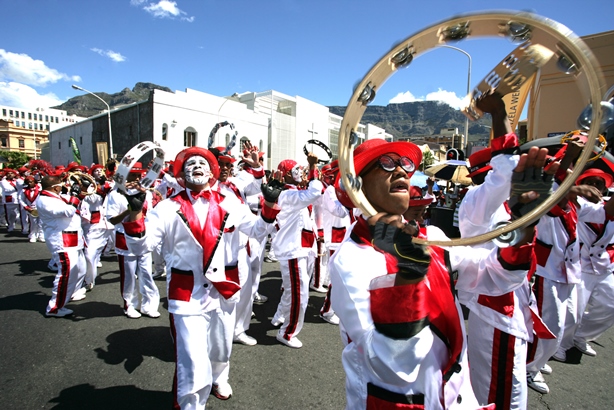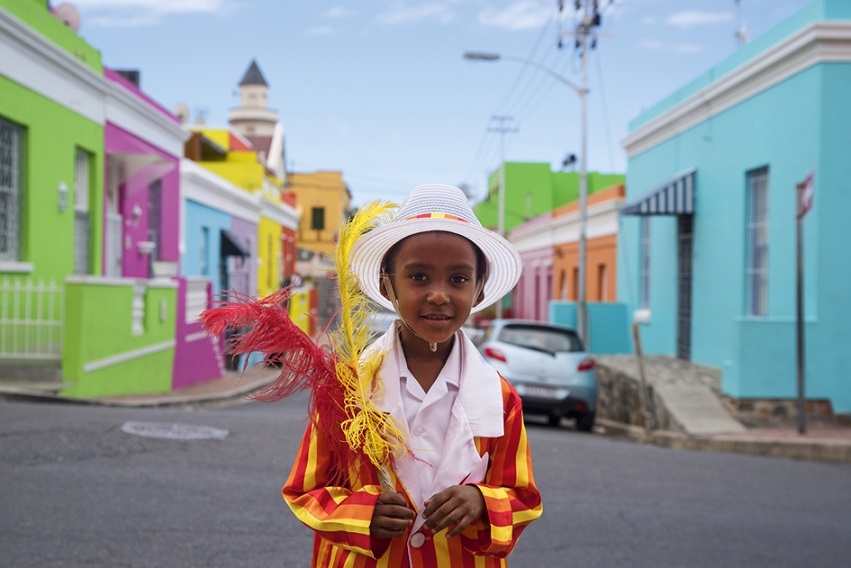Cape Town is the second most populated city in South Africa after Johannesburg, the country’s legislative capital, and also one of its three official capitals.
But Cape Town is also Africa’s most popular tourist destination. It’s well-known for its diverse natural beauty and rich flora biodiversity, stunning geography, with places like Table Mountain and Cape Point, and especially its cultural attractions, with one of the top ones being Kaapse Klopse, a festival full of colour and joy.
The festival takes place annually on January 2nd on the streets of Cape Town, filling the streets of the Bo-Kaap neighbourhood with colours and contrasts as a lively, bustling parade, with hundreds of people marching from District Six to the city centre.
Its neighbours march through the streets playing instruments, happily dancing and singing on Tweede Nuwe Jaar (Second New Year). This artistic performance is part of Cape Town’s oldest traditions and is steeped in history and culture, dating back to South Africa’s colonial era.
The festival offers the dancers, musicians and jugglers participating with a great opportunity to display their talent during the march. Drums are the principal instruments, but you’ll also see violins and the banjos being played to offer ethnic melodies. The colourful, glittery costumes are another particular feature of the festivities that attracts thousands of spectators to Cape Town each year.
An origin to commemorate
Although the first festival dates back to 1890, its origins go back to the colonial era when slavery was rife. In the mid-19th century, Dutch settlers in Cape Town gave their slaves one day a year off, this day was the 2nd of January when they could celebrate their New Year’s celebrations. Once slavery was officially abolished in South Africa in 1834, Tweede Nuwe Jaar was transformed into a commemoration of freedom with lively parades full of music and dance filling the streets.
Those freed slaves and their descendants formed dance bands that initially played more European songs, coming from their masters’ countries, but over the years they added more Creole songs, mixing Oriental and European instruments and melodies.
Today, the event is seen as a reminder of its origins, a commemoration of freedom but also a form of the inclusion and participation of everyone, and to promote social cohesion and integrations as many of them come from disadvantaged backgrounds.








